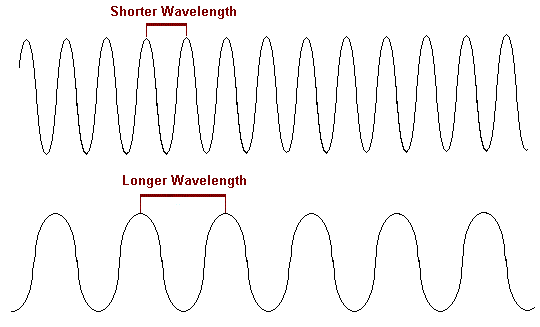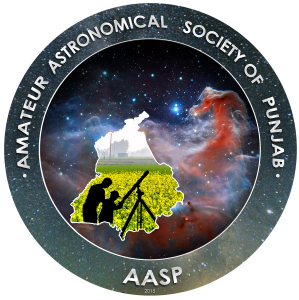I will be posting this article in two parts; this one is for our Mother Earth.
We sense, then we feel; we feel because we are alive or we are alive because we feel? Our eyes are the most precious gift of this Universe to us. Color pleases our eyes. Without colors, everything would become tasteless for the eyes. Those Hubble images that we see are beautiful because of the colors we see after they are produced. A black and white Universe would be like a song without music.
We will start from the skies. Blue is the color of the sky and sea. It is often associated with depth and stability. It symbolizes trust, loyalty, wisdom, confidence, intelligence, faith, truth, and heaven. Those were more philosophical words, but why is the sky blue at first place? Why not yellow, red, green, etc.? Very few people know why it is so. The source of light on Earth is the Sun thus the blue color has something to do with that light.
So, first of all, I would like to introduce light here, light is an electromagnetic radiation. The portion of the whole electromagnetic radiation spectrum that is “visible” to us falls in the visible spectrum. The spectrum is divided into different regions in terms of decreasing wavelength as; radio waves, microwaves, infrared (IR), visible, ultraviolet (UV), x rays and gamma rays. Just like when a radio matches a particular or the “right” frequency we get to hear a particular channel. Similarly, our eyes can detect or tune in with only particular part of that electromagnetic spectrum, which thus we call as the visible (light) region. The rest is out of human “seeing” boundaries. That visible light is the white light which has its own color spectrum, and we see those colors under various conditions.

This is beautifully shown by the prism experiment (thanks to Newton) which separates white light into different colors which have different wavelengths. It goes as “VIBGYOR” for violet, indigo, blue, green, yellow, orange and red. Violet has the shortest wavelength and red has the longest wavelength.

The length of a light’s “wave” or the wavelength is the distance between two nearest peaks (the highest places) or two nearest troughs (the place where it dips the lowest). One common unit used to measure the length of light waves is not feet or inches, but rather something called an angstrom.

The sky is/or looks blue because the dust particles or moisture or the atmosphere present up there reflects the blue color from the white light more than other colors and as we see what is reflected back to us, we see the sky as blue colored. Why is only the blue scattered? It’s because atmosphere tends to scatter light with shorter wavelengths more. It is called as Rayleigh scattering, named after British physicist Lord Rayleigh, which says, it is the scattering of light by particles in a medium, without a change in wavelength. It accounts, for example, for the blue color of the sky, since blue light is scattered slightly more efficiently than red. Then why not Violet and Indigo which has an even shorter wavelength than Blue? The sky is not exactly that exact blue of the spectrum, it is “sky” blue or blue hue or there is some part of other colors in it too which finally gives that sky blue appearance. It has also something to do with our eye’s receptors or cone cells which are sensitive to RGB (red, green and blue). Thus, you can say eyes show partiality towards the blue more or the final result of a messed up mixing of the color game is that blue color.

The ocean seems to be blue, but it has nothing to do with the skies, instead it works in a similar way by absorbing other colors more and reflecting the blue one. Blue is beautiful and calming, no doubt.
Now let us talk about the Sun, I am including it in this article because it is really a “part” of our Earth. The Sun is NOT yellow, red or orange as we see it. Those colors are produced by various factors. If we take a picture of the Sun from space, the light from it has all colors mixed together and it looks white.

As the light reaches Earth, we see it as yellow, red or orange. Hey, how can I forget about marvelous rainbows? A rainbow is the best example of dispersion of Sun’s (white) light (in seven colors) by moisture particles present in the air, which act as prisms (just like the prism experiment I mentioned before).
Now it (Sun) appears to be yellow (day), orange or red (during sunset), because these are the colors which are able to get through the thick atmosphere and the light, doesn’t remain white as seen from space. That sunset looks red because during that time, when Sun is near the horizon, light has to pass through thicker atmosphere (or say it has to pass through more of it to reach you unlike noon time when its light is falling directly) and thus only the longer wavelength (red light) survives and thus passes through. Indeed, it looks beautiful. We must thank that white light which seems to be colorless, actually has all those colors hidden in it. When you combine those colors differently, you get more colors; it is limitless, just like our Universe.
Earth indeed is colorful, so alive, imagine about the rest of the Universe. I will paint with those colors in the next article.
That differentiates alive from the dead
Is green, blue and Red
As the light from Sun spreads
At night, all its colors when the Universe shreds
Red blood flows in veins
Like when flood flows as it rains
- Jaskaran
